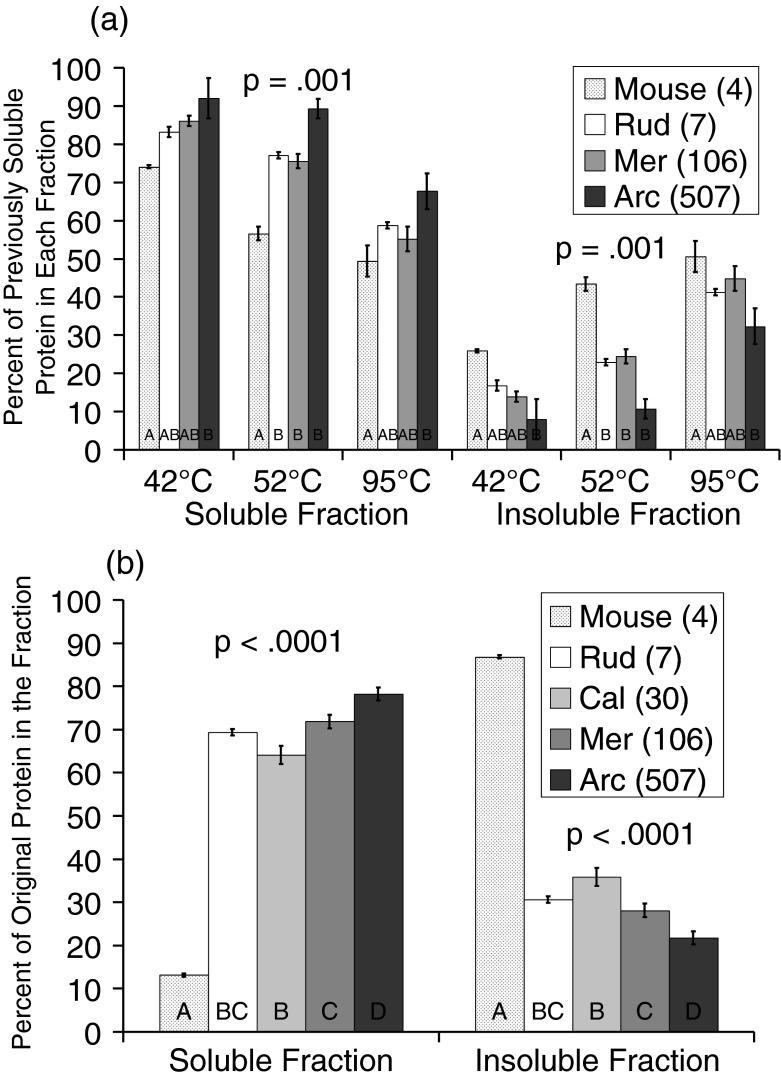Fig. 3.
a Serial temperature-induced aggregation: we partitioned pure soluble cytosolic lysates into soluble and insoluble fractions after temperature stress. The surviving soluble fraction is reused for each higher temperature, with insoluble temperature-induced aggregates removed each time by 100,000 g ultracentrifugation for 1 h. Note that fewer aggregates are seen in the longest-lived bivalve at each temperature, and most aggregates are seen in the mouse at each temperature. These differences were assessed by two-way analysis of variance, finding a main effect of species, F(3,24) = 7.04, p = .001, and of stress, F(2,24) = 20.40, p < .001. There was no significant interaction between species and stress levels, F(6,24) = 2.00, p = .105. b Denatured aggregation: we partitioned pure soluble cytosolic lysates into soluble and insoluble fractions after boiling for 15 min and 14,000 g centrifugation for 5 min. The results were assessed by one-way analysis of variance, F(4,15) = 353.99, p < .0001. Individual differences between species were assessed post hoc by Tukey's HSD, and bars not sharing a common letter are statistically different p < .05

